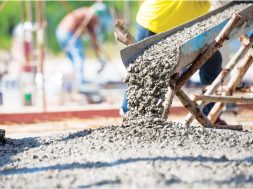Green building materials thriving edge of sustainable construction

The green building materials market is at the forefront of sustainable construction, driven by increasing environmental awareness, stringent regulations, and the growing demand for energy-efficient and eco-friendly buildings.
The Green Building Materials market represents a transformative segment within the construction industry, characterised by adopting sustainable and eco-friendly materials and practices to reduce environmental impact, enhance energy efficiency, and promote occupant health and well-being. Green building materials encompass a diverse range of products, including recycled materials, renewable resources, low-emission materials, and energy-efficient technologies used in the design, construction, and operation of buildings and infrastructure. With the increasing focus on environmental sustainability, stringent regulations, and the demand for energy-efficient buildings, the Green Building Materials market continues to gain momentum, driven by innovation, technological advancements, and changing consumer preferences. The global green building materials market is forecast to expand at a CAGR of 8 per cent and thereby increase from a value of US$265.8 Bn in 2023 to US$455.6 Bn by the end of 2030, as per the report published by Persistence Market Research.
Several vital factors propel the growth of the Green Building Materials market. Firstly, increasing awareness of environmental sustainability, spurred by concerns over climate change and resource depletion, drives demand for green building materials as stakeholders prioritise carbon footprint reduction and sustainable development practices. Secondly, stringent building codes and regulations worldwide, alongside certifications like LEED and BREEAM, compel the adoption of environmentally friendly materials, creating market opportunities for suppliers and manufacturers. Additionally, the economic benefits of green building materials include long-term cost savings through reduced energy consumption and enhanced durability, as well as attractive investment and driving market adoption. Lastly, ongoing technological advancements and innovation in materials and systems contribute to market growth by improving energy efficiency, indoor air quality, and overall building performance, thus enhancing market differentiation and competitive advantage.
The green building materials market, driven by environmental awareness and regulations, offers opportunities for manufacturers to pioneer sustainability. One key opportunity is meeting the demand for energy-efficient materials like low-emissivity glass and insulated concrete forms to lower energy bills. Additionally, there’s a growing interest in sustainable materials such as bamboo and recycled glass. Manufacturers can leverage this trend by producing green building materials with high recycled content and certifications, appealing to environmentally conscious architects. Innovative manufacturing processes like 3D printing enhance sustainability efforts, positioning manufacturers as leaders in sustainable urban development.

Two prominent trends drive innovation and market expansion in the green building materials market. Firstly, there’s a rising demand for energy-efficient and sustainable building envelopes, facilitated by materials like energy-efficient insulation, low-emissivity windows, and reflective roofing. These materials lower energy consumption and operational expenses and align with increasing government mandates for higher energy efficiency standards. Secondly, there’s a growing utilisation of recycled and renewable materials in construction projects, such as recycled steel, glass, and wood incorporated into concrete, insulation, and flooring. Renewable materials like bamboo, cork, and straw offer sustainable alternatives, promoting resource conservation and minimising environmental impact.
Despite positive trends, the green building materials market faces challenges related to cost competitiveness, scalability, and fragmentation. Higher upfront costs than conventional materials hinder adoption among budget-conscious developers and homeowners; however, long-term benefits such as energy savings and environmental advantages outweigh initial expenses, offering a favourable return on investment. Additionally, regional scalability and material availability disparities, influenced by factors like market demand and infrastructure, impede widespread adoption. Overcoming logistical hurdles necessitates collaborative efforts among manufacturers, distributors, and construction stakeholders to establish local supply chains and ensure the timely availability and affordability of green building solutions.
Recent advancements in green building materials are centred around innovation, optimising performance, and adhering to circular economy principles. Manufacturers are heavily investing in research and development to introduce novel materials, technologies, and production methods to enhance green building products’ sustainability, durability, and overall performance. These innovations include bio-based polymers, 3D printing, and advanced composites, which present opportunities for creating lightweight, high-strength materials with reduced environmental impact and increased design flexibility. Additionally, the industry has a growing focus on circular economy principles and waste reduction initiatives. Companies are implementing strategies like material recycling, closed-loop manufacturing, and product stewardship programs to minimise waste generation and maximise resource efficiency throughout the product lifecycle. Certification programs such as Cradle to Cradle, LEED, and BREEAM are crucial in validating and recognising sustainable building materials, fostering market confidence, and driving demand for green building solutions.
19
Cookie Consent
We use cookies to personalize your experience. By continuing to visit this website you agree to our Terms & Conditions, Privacy Policy and Cookie Policy.









